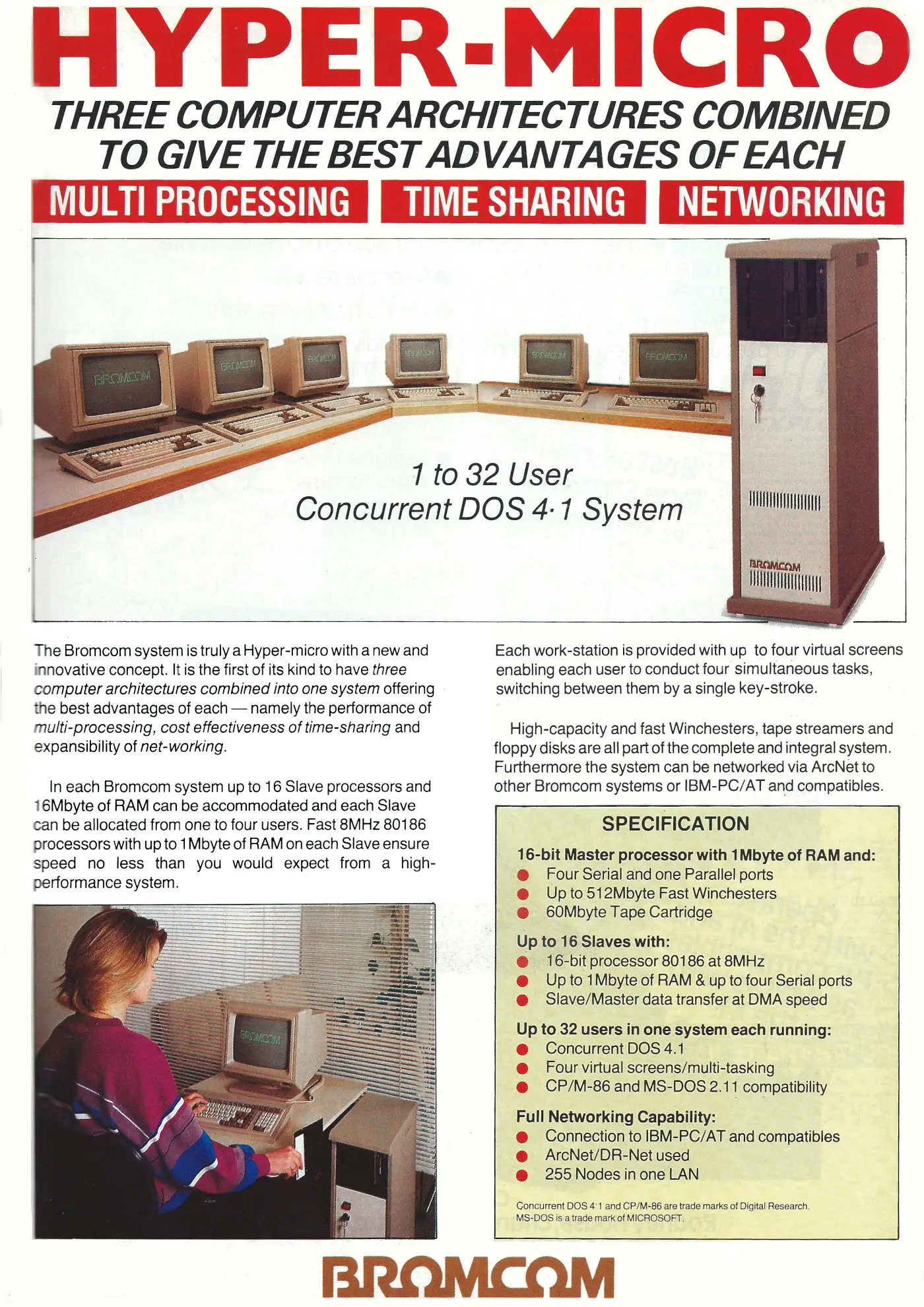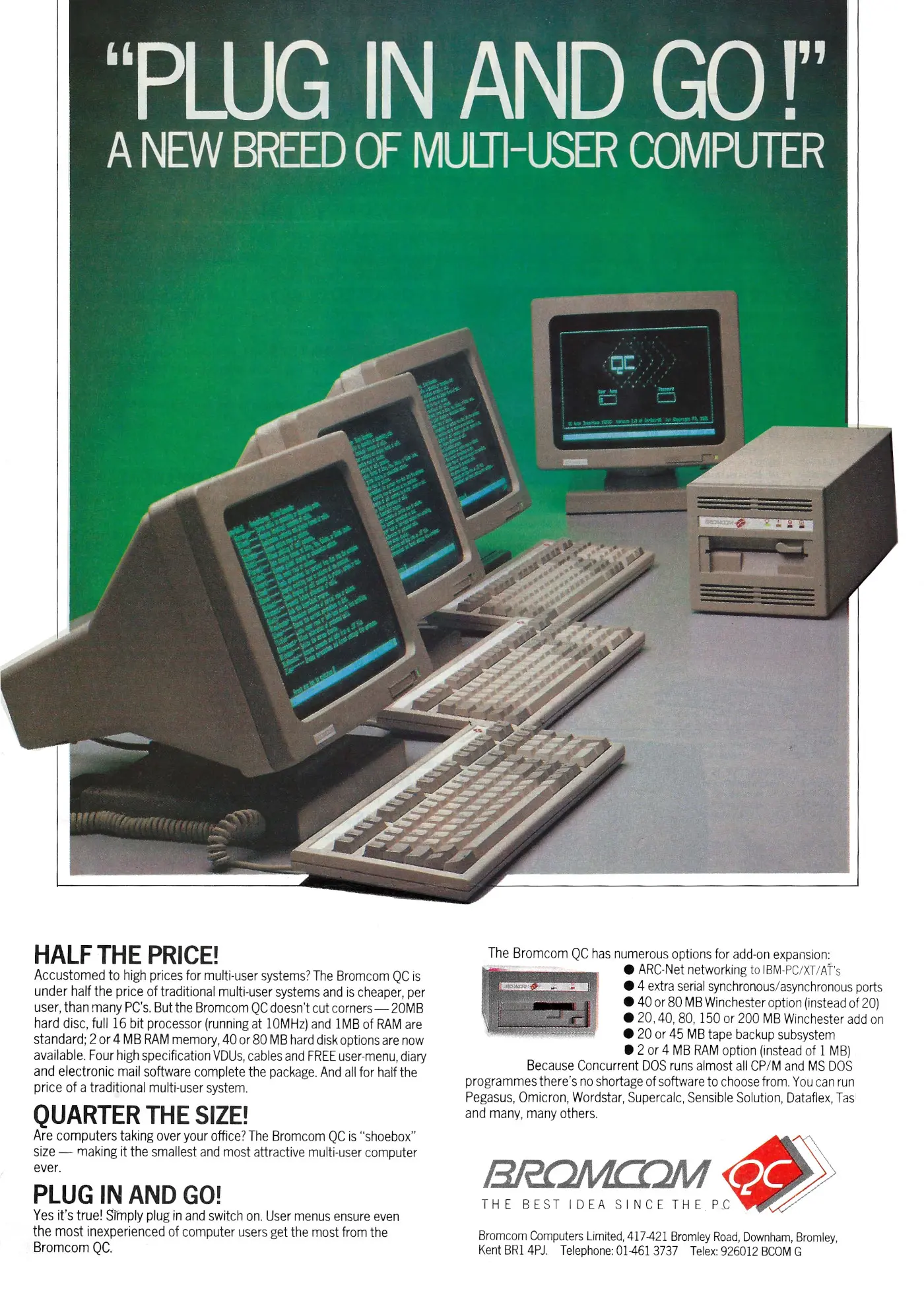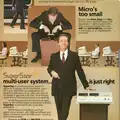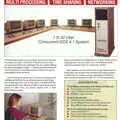
Bromcom Advert - September 1986
From Practical Computing

Hyper Micro: Three computer architectures combined to give the best advantages of each
In the olden days of computing, i.e. the 1970s, there were essentially three types of computers: room-sized mainframes like IBM's 360, refrigerator-sized minicomputer systems like DEC's PDP-11, and finally desk-top microcomputers like the Commodore PET or Apple II.
The first two types were multi-user in that there was one box with the processing power and users connected via dumb terminals, sharing resources like memory and printers. They often - especially mainframes - operated on a time-sharing basis.
Micros on the other hand were generally one per user - they were, after all "personal computers" - and came with their own disks, printers, keyboards and so on. There was no timesharing or indeed resource-sharing of any type at all.
As microcomputers got more powerful, they started blurring the lines and eating into the territory of minis and even mainframes, so now a desktop micro could have a few - often up to four - terminals plugged in to it.
It was this commoditisation of multi-user sytems that was said to have led to the death of Digital/DEC.

Bromcom's later QC system - a four-user plug-in-and-go multi-user micro
This seemed to get particularly popular with the release of the 80286 processor, as this was the first Intel chip to offer protected memory, which made it much easier to run multiple processes at the same time.
Even before that, it was common to find microcomputers with multiple processors in them, supporting multiple users, where even Intel's less-popular 80186 found a home, as its on-board memory management made it simpler to host multiple CPUs in the same computer.
This whole sideline seemed to reach its zenith with this - Bromcom's Hyper Micro - a machine which revels in the fact it has bought together multi-processing - having multiple processors handling groups of users, multi-tasking - each processor running multiple processes for one or more users, and some sort of time sharing, just like a mainframe.
Bromcom Computers was initially known as Bromley Computer Consultancy Limited, with Bromcom being a trading name for its micros, the first of which - the SuperStar multi-user system - launched at the beginning of 1984.
It appears to have been formally founded as a computer company in July 1986 - initially as Shoebox Limited - by computer consultant Ali Guryel, with its name being changed to Bromcom Computers Ltd towards the end of that year[1]. It was successful enough to float as a public company in 1994.
Its Hyper Micro system could support up to 32 users running on Concurrent DOS 4.1. CDOS, from Digital Research, was a version of its earlier Concurrent CP/M operating system with some extensions added to provide a "PC Mode", which was necessary to run MS-DOS software. Concurrent CP/M was itself a multi-user version of the venerable CP/M operating sytem that was the de-facto standard in the 1970s.
Oh, and then you could network more Hyper Micros together, using ArcNet or Digital Research's DR-Net, to add even more users - with up to 255 32-user nodes (8,160 users in total) in the one network.
There's no price on the main advert, but Bromcom's later QC four-user system retailed for £4,495 + VAT, which is £21,000 in 2025, or £5,260 per user.
Bromcom later diversified into producing Management Information Systems and administrative software for schools, and is still in business as of 2025[2].
Date created: 17 February 2024
Last updated: 14 October 2025
Hint: use left and right cursor keys to navigate between adverts.
Sources
Text and otherwise-uncredited photos © nosher.net 2025. Dollar/GBP conversions, where used, assume $1.50 to £1. "Now" prices are calculated dynamically using average RPI per year.

